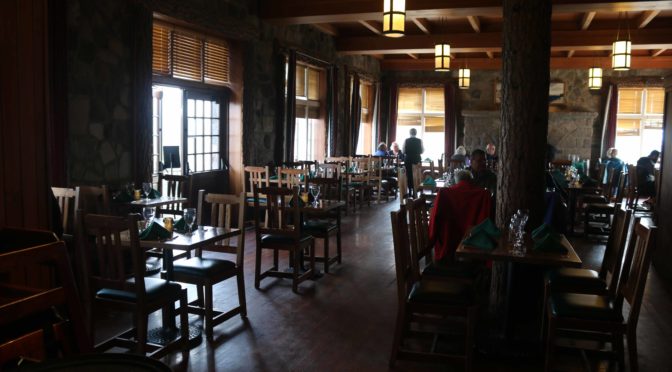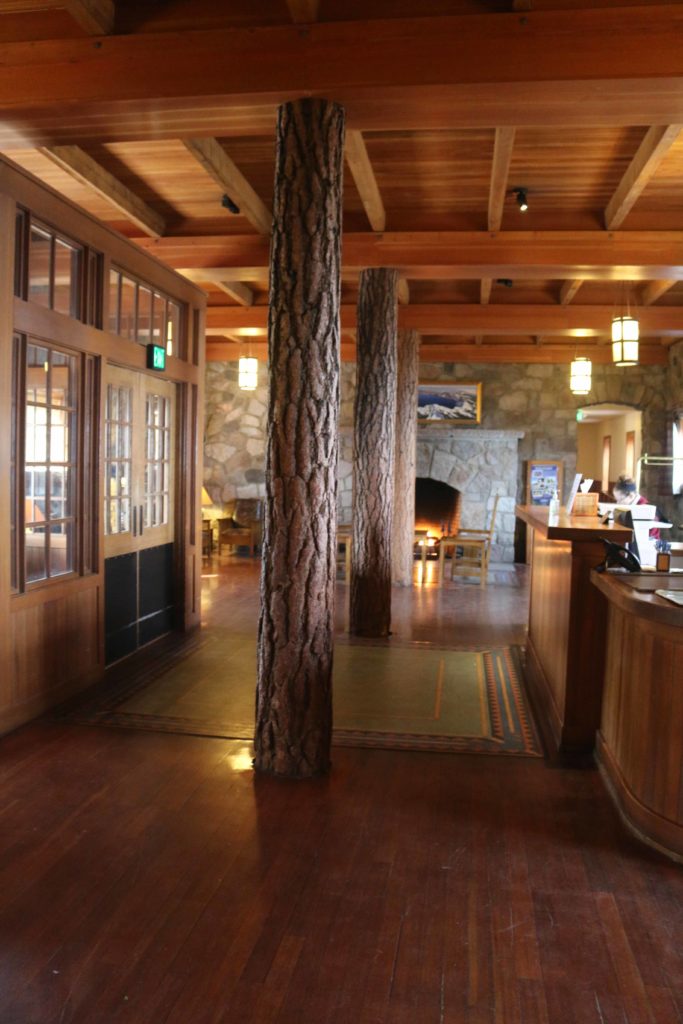Crater Lake Lodge’s pine posts — real or not?
• By LEE JUILLERAT H&N Regional Editor
CRATER LAKE — It’s a question most people who visits the Crater Lake Lodge ask: Are the ponderosa pine posts in the lobby, Great Hall and dining room real or not?
Not. But they used to be.
According to Steve Mark, Crater Lake National Park’s historian, when the Crater Lake Lodge, which is celebrating its 100th anniversary this year, opened in 1915, the original bark covered posts were real trees. But after the lodge was closed in 1989 because of structural deficiencies and was essentially rebuilt — only 10 percent of the original lodge, mostly the stone fireplaces and some decorative wood remains — the trees were replaced by structural steel posts with bark veneers.
Replacing the trees was just part of the massive rehabilitation, one that took five years and cost $15 million. “That seems cheap now,” Mark says.
The original lodge had no foundation, something he says was common during a time when buildings and homes were built of wood and were not expected to last forever.
“People didn’t look at buildings as something you kept for a long time.”
For many years, it was uncertain how long the lodge would remain perched on Crater Lake’s rim. Building the lodge, which in one early rendering was an all-stone building and was later redesigned to have the appearance of an English Inn, proved a struggle. “Apparently the vision kept changing,” Mark said. Snowy winters limited the construction season, scared off developers and caused building costs to spiral.
When it opened July 3, 1915, the exterior walls were lined with tar paper, interior walls were a thin “beaver board,” furnishings were minimal and only a small generator provided electricity. In a sense, the lodge was never genuinely finished.
A new wing of rooms was added in the early 1920s, but little was done to offset the lodge’s deficiencies or combat its ongoing neglect.
The National Park Service, which bought the lodge in 1967, could afford to make only Band-Aid repairs. Eventually, emergency measures included adding cables to keep the building from collapsing. At one point the NPS proposed tearing down the lodge and rebuilding a replacement hotel at another location away from the rim — a proposal that was abandoned when public outrage demanded it be rebuilt.
The lodge closed in 1989, when engineers determined it might collapse.
When it reopened in May 1995, the reconstructed, 71-room building was buttressed with reinforced concrete and structural steel and included an enlarged basement of new safety systems and utilities. A goal of the work was recreating the lodge’s rustic 1920s look or, essentially, making a new building look old.
Instead of being functional, the bark-covered posts are decorative reminders of times past. Other evidence of ponderosa pine veneers can be seen in the staircase from the Great Hall to the second floor and dining room.
Other pages in this section



